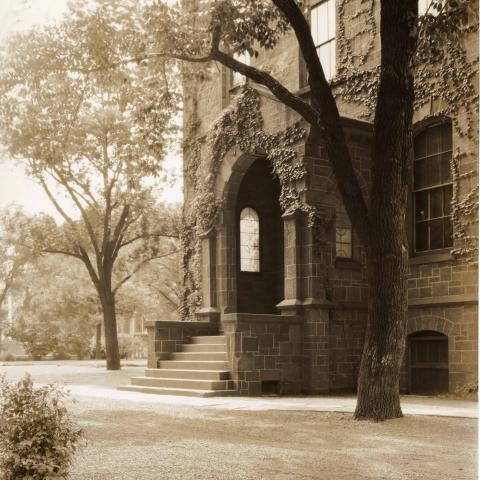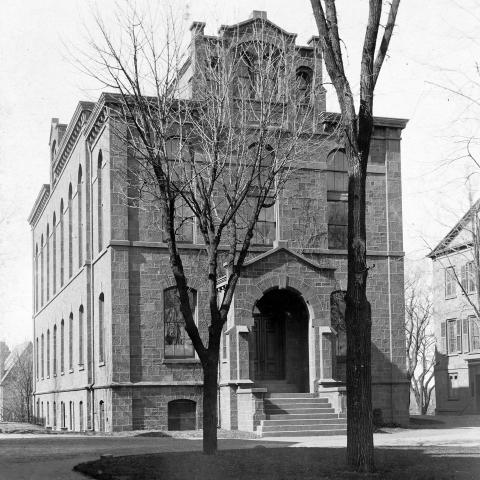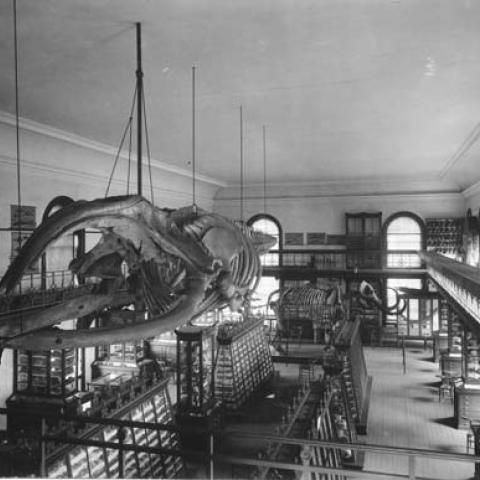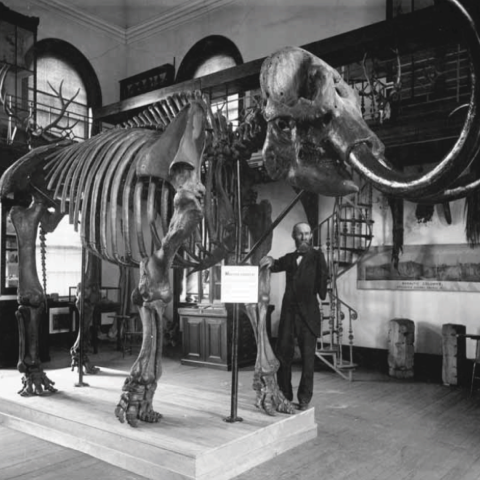The History of Geology Hall
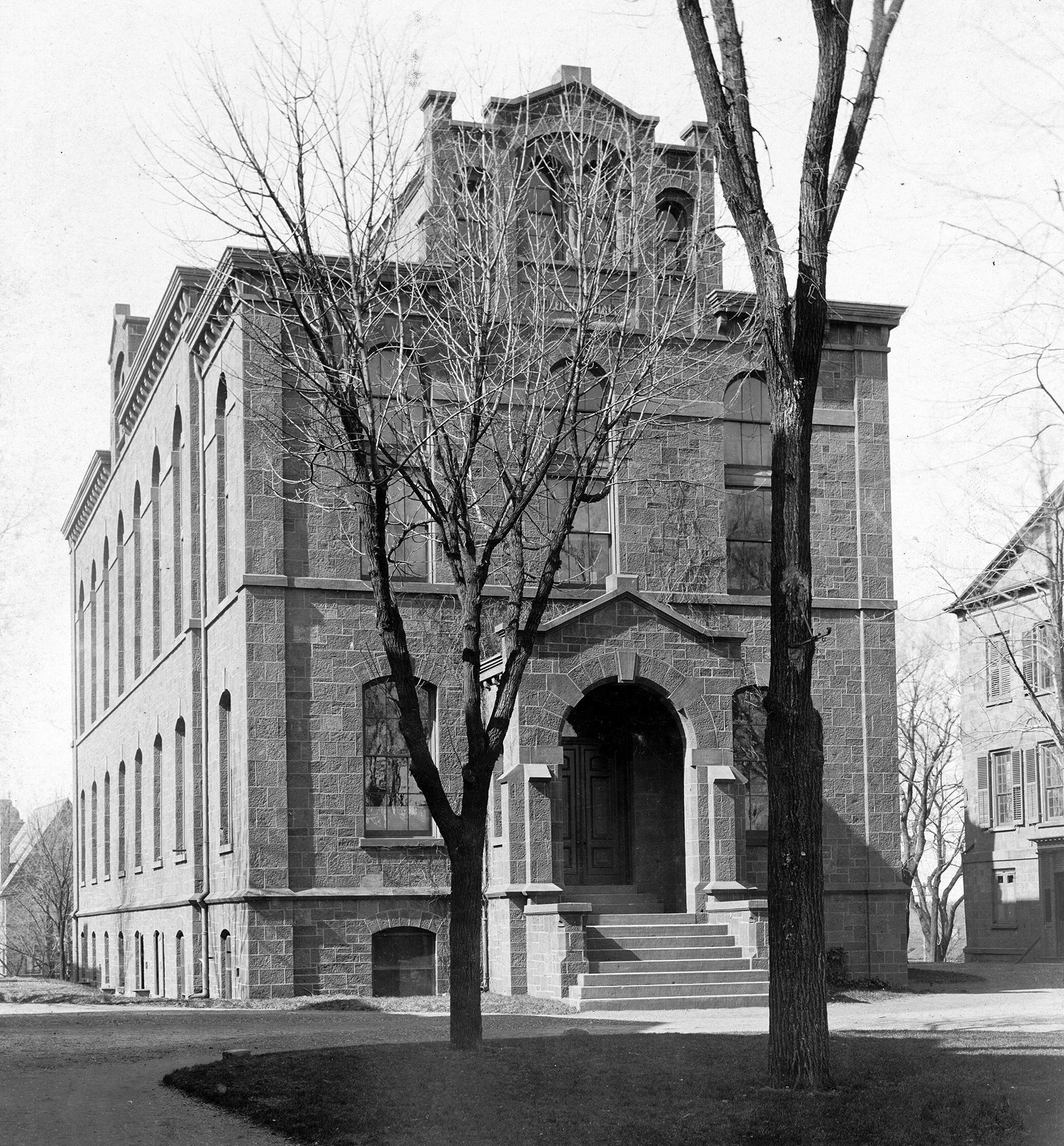 Geology (Geological) Hall (1872), opened in 1872 to enhance scientific instruction at Rutgers College, was purpose-built to fulfill the terms of the Land-Grant Agricultural and Mechanical College Act, or Morrill Act of 1862. Rutgers alumnus Henry Janeway Hardenbergh's building design is a boxy Renaissance Revival building constructed in brownstone to fit into the existing context. Geology Hall and Kirkpatrick Chapel, also designed by Hardenbergh, flank Old Queens. Geology Hall provided space for an armory and military instruction on the ground level, offices, instructional and laboratory space for scientific departments throughout the building, as well as an impressive double-height museum space for the display of the college's mineral, fossil and natural history collections. The Rutgers Geology Museum, which is open to the public, remains the oldest continuously operating geology museum on a U.S. college campus. Geology Hall is a contributing building to the Queen’s Campus Historic District on the National Register of Historic Places.
Geology (Geological) Hall (1872), opened in 1872 to enhance scientific instruction at Rutgers College, was purpose-built to fulfill the terms of the Land-Grant Agricultural and Mechanical College Act, or Morrill Act of 1862. Rutgers alumnus Henry Janeway Hardenbergh's building design is a boxy Renaissance Revival building constructed in brownstone to fit into the existing context. Geology Hall and Kirkpatrick Chapel, also designed by Hardenbergh, flank Old Queens. Geology Hall provided space for an armory and military instruction on the ground level, offices, instructional and laboratory space for scientific departments throughout the building, as well as an impressive double-height museum space for the display of the college's mineral, fossil and natural history collections. The Rutgers Geology Museum, which is open to the public, remains the oldest continuously operating geology museum on a U.S. college campus. Geology Hall is a contributing building to the Queen’s Campus Historic District on the National Register of Historic Places.


